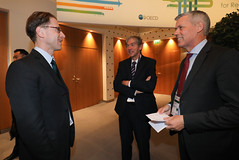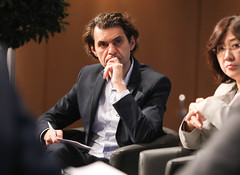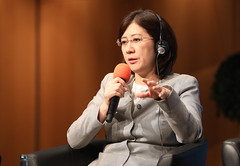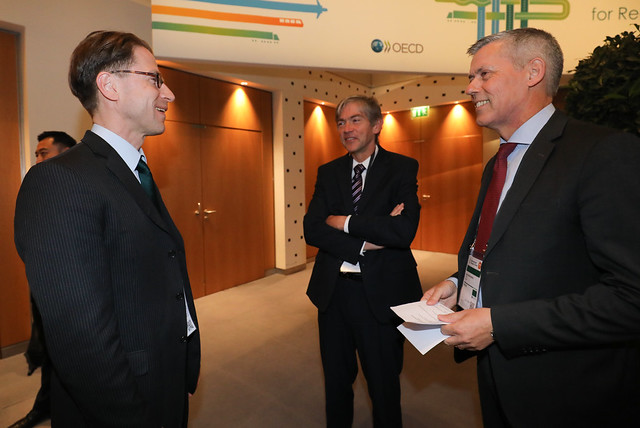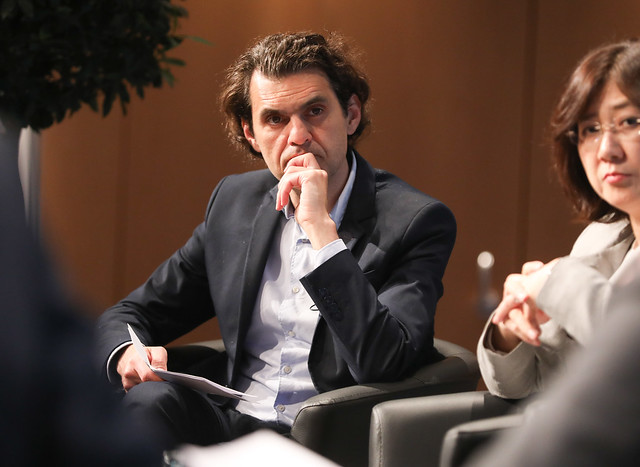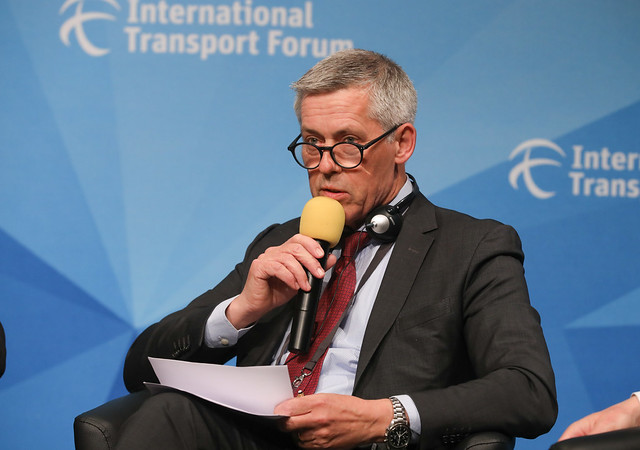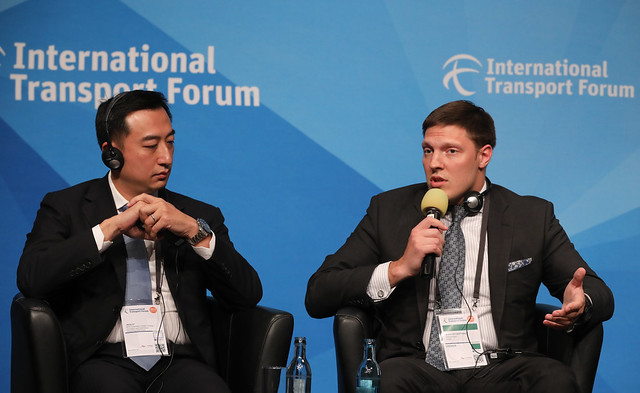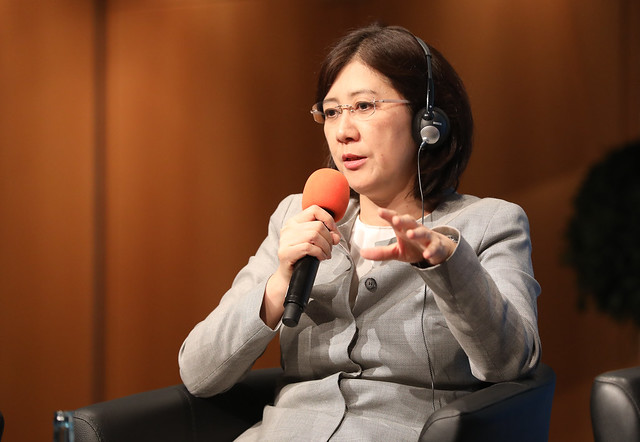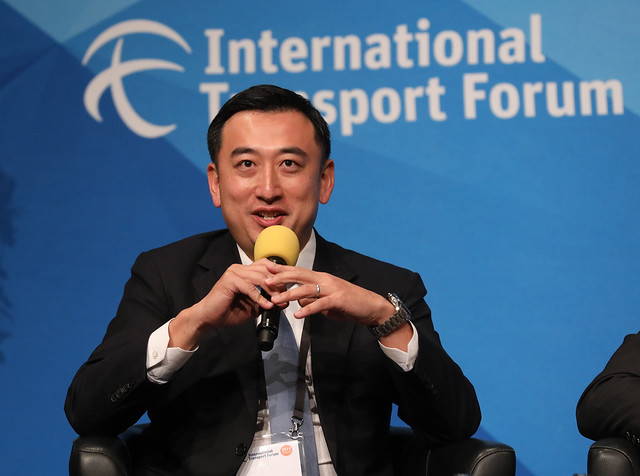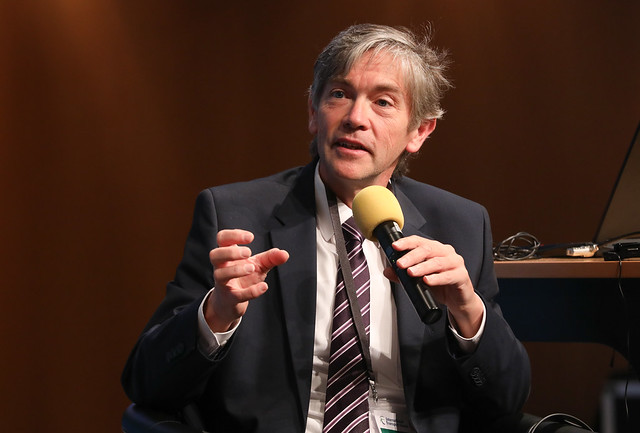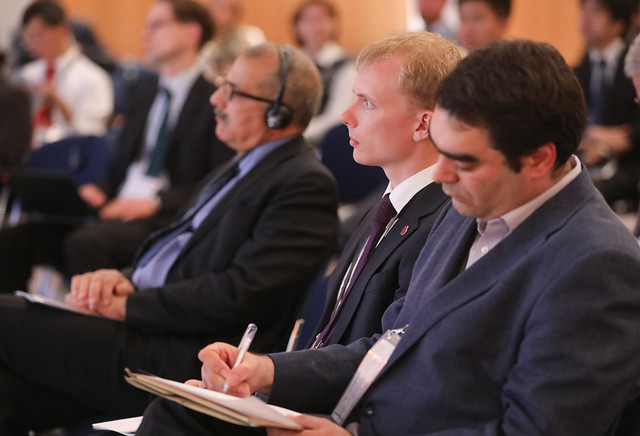The panel discussed the unique features, advantages and drawbacks of rail in fostering connectivity at different regional levels. Many urban areas depend on railways to move large and increasing numbers of commuters. In some cases, medium distances rail services (50-200km) have an important role in regional integration, including across borders. High-speed rail has fostered the development of mega-regions, creating networks of urban centers and offering a lower-emission alternative to air or car travel. Rail can play a key role in the development of sustainable cities, inclusive regions and mitigation of climate change, but success depends on how well matched regional characteristics and rail system configurations are, as well as funding availability. New challenges and opportunities arising from growing urbanisation and new mobility services should also be integrated into rail service planning.
Libor Lochman argued that rail will increasingly be the “backbone of the transport system”. Rail is the “green mode” and the passenger volumes moved by rail are rising. Both new infrastructure investments and improved commercial strategies will help sustain Rail’s upward trend. Björn Westerberg highlighted increasing awareness of environmental sustainability as being a factor favouring rail demand in Sweden and beyond. There is growing understanding that action is needed to prevent climate change, “flight shame” is taking root and rail is well positioned to provide a fast, reliable and low-emission alternative on many routes.
The Moscow Central Circle is an example of expanding rail services in a large metropolitan area. Recently opened after the modernisation of an old freight line, it showcases how surface rail can be successfully integrated with an underground system. Unification of the ticketing systems was an important element of this integration. In the last decade, Moscow has increased in size and the metro system has been expanding to catch up: around 75 new stations were opened in the last years. According to Anton Sevastyanov, these initiatives have increased the profile of public transport in Moscow, offering faster, more comfortable trips and greater accessibility. If public transport provides a high standard of services, people will have confidence in the system and ridership will increase.
In Japan, high-speed rail, known as Shinkansen, has been successful in fostering regional development. This is partly due to shorter travel times, but also to the development that has taken place around several Shinkansen stations. These were placed outside city centres in zones with little to no activity, but business, commercial and residential areas have emerged around the stations and, even in rural areas, land values have increased. The first lines built were a huge success and are now the highest volume corridors (e.g. Tokyo-Osaka, along the Pacific coast). The system is still growing, but very robust demand and operator profitability forecasts are required to obtain finance for new projects. As Akiko Yoshida pointed out, the Shinkansen is a “high-quality service industry”, so it is not seen only as public infrastructure. Continuous effort is needed to maintain high service levels, adapting to new flows and trip purposes (e.g. tourism) and to competition from emerging low-cost air carriers.
Hong Kong has recently been connected to mainland China’s high-speed rail network, which is by far the largest in the world. Even though the new line is only 26 km long, it has substantially changed connectivity in the “Greater Bay Area” (i.e. Hong Kong-Shenzhen-Guangzhou). Some trip lengths have fallen from one hour to 25 minutes and others that took two hours now take 57 minutes. Jerry Li noted that their slogan is not only “Go Faster”, it is also “Go Further”. Having access to China’s HSR opens new possibilities and generates demand for destinations that previously would not be considered for travel.
Rail’s role in regional integration in Tunisia was highlighted by Sassi Hammami. Rail is a priority for the Tunisian government and features prominently in their National Plan for 2040. This involves renewal and electrification of the network, modernisation of the rolling stock and regulatory harmonisation. High-quality passenger rail connections between Morocco, Algeria and Tunisia are also being planned, using existing lines currently used exclusively for freight. The long term goal is to link the entire Maghreb region via high-speed rail. Rail can play a part in fostering Tunisia's strategic position as a hub between Africa, Europe and the Arab world.
An important European example of integrating cross-border regions through rail is the Oresund Bridge between Denmark and Sweden. Björn Westerberg stated that the planned tunnel between Sweden and Germany can help to integrate another big European region, “enabling people to meet”, which is the ultimate objective of transport connectivity. But there are still several obstacles to overcome when it comes to rail cross-border integration. Unlike in the aviation sector, there is neither common language nor rules. Multiple signalling, safety and electrification systems yield a high level of complexity, which must be addressed if rail’s potential contribution to cross-border regional connectivity is to be realised.
Funding for new rail infrastructure is predominantly provided by the government, as for other sectors. Given high volumes, public subsidies are generally not required to defray operating costs. However, the issue of subsidies arises in more sparsely-populated areas, which have lower demand levels. Public funding in these situations increases mobility, aids regional cohesion and allows for more balanced growth across regions. This helps relieve congestion in urban centres allows people and business to be located across a wider area within the region.
Another key element in enabling rail to realise its potential contribution to connectivity is to reform the policy treatment of the externalities imposed by different transport modes, according to the “polluter paying scheme”. Mr Libor noted that, at present, “Not all modes pay for the costs they are causing." The EU commission will shortly publish a study of the external costs of different transport modes which will provide an improved picture of the external costs borne by society in relation to each mode. New regulatory arrangements, drawing on these insights, will enable current imbalances in the treatment of external costs to be addressed.
Integrated planning of land use and public transport can foster urban development while simultaneously being a source of financing for public transport. In East Asia, the relationship between transport operators and urban development is generally more direct than in Europe. However, an example from Sweden showed how, in developing a previous expansion of rail infrastructure, municipalities were required to guarantee construction of new buildings and housing near stations in order for the project to proceed.
A key opportunity and challenge facing the sector is the emergence of new digital mobility services and the MaaS (Mobility as a Service) paradigm. But several questions remain unanswered, including that of how to share data among different modes and organisations and how to develop schedules and seamless transfers in a context where new means of transport are entering the market. Jerry Li argued that one of the biggest challenges ahead for rail will be how to interact and integrate with these new services.
Speakers
Speakers

Akiko Yoshida
Assistant Vice-Minister for International Affairs, Japan
Ministry of Land, Infrastructure, Transport and Tourism




